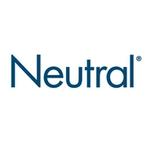Neutral Baby Shampoo
To find out more about the ingredients used in the product and its function simply click on ingredient name. Due to limited space on pack, we also disclose a longer list of fragrance ingredients. For recently launched products or where the formulation has changed, this detailed fragrance information might not be immediately available as it takes time to update each product page.
We take great care to ensure information on this site is up to date. However, please always check the product packaging for the most up to date ingredients used.
All product names which include a date (month and year) are no longer manufactured.
Ingredients
Aqua (Solvent)
Dissolves substances or ingredients
Sodium Laureth Sulfate (Surfactant)
An ingredient which helps to clean or remove dirt and oil, creating foam when used with water
Sodium chloride (Viscosity Controlling Agent)
Controls the density or thickness of a product
Glycerin (Humectant)
Helps to retain water in a product, in hair or the top layers of skin
Cocamidopropyl Betaine (Surfactant)
An ingredient which helps to clean or remove dirt and oil, creating foam when used with water
Sodium benzoate (Preservative)
This prolongs the shelf-life of the product, even once it has been opened, protecting it from bacteria, yeasts and moulds
Behenoyl PG-Trimonium Chloride (Antistatic Agent)
Helps to make you hair, skin, clothes, kitchen ware or hard surfaces feel better by reducing static charge
Disodium Cocoyl Glutamate (Surfactant)
An ingredient which helps to clean or remove dirt and oil, creating foam when used with water
Sucrose Laurate (Emulsifier)
Helps two or more liquids, that don't usually combine to form a single solution; often referred to as an 'emulsion'
Citric acid (pH Adjuster)
Controls the acidity / alkalinity balance of products
Hexylene Glycol (Solvent)
Dissolves substances or ingredients
Sorbic acid (Preservative)
This prolongs the shelf-life of the product, even once it has been opened, protecting it from bacteria, yeasts and moulds
